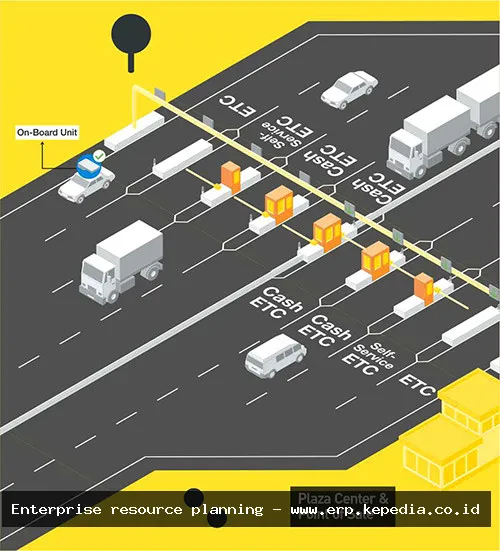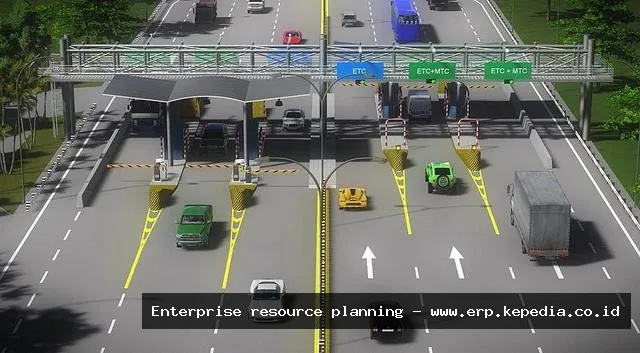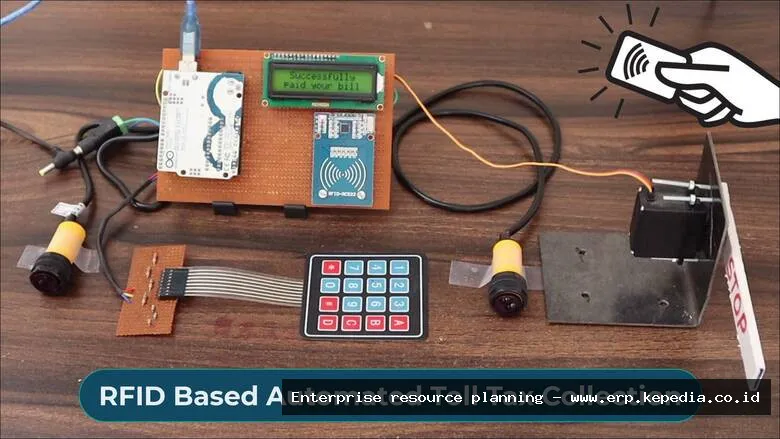Electronic Toll Collection System: Complete Guide, Features and Details
Imagine driving down a highway, seamlessly passing through toll booths without ever having to stop or even slow down. This is the reality offered by Electronic Toll Collection (ETC) systems. ETC has revolutionized the way we pay tolls, offering convenience, efficiency, and contributing to reduced traffic congestion and environmental impact. It’s a technology that’s become increasingly ubiquitous, and understanding how it works, its benefits, and its future is crucial for anyone who uses roadways regularly.
This article provides a comprehensive guide to electronic toll collection systems, exploring their core components, the various technologies involved, the advantages they offer, and the challenges associated with their implementation and operation. We’ll delve into the different types of ETC systems, how they interact with vehicles, and the considerations that transportation authorities must take into account when designing and maintaining these complex systems. Whether you’re a daily commuter, a transportation planner, or simply curious about the technology behind seamless toll payments, this guide will provide you with a thorough understanding of ETC.

From the early days of manual toll collection to the sophisticated systems of today, the evolution of tolling has been driven by the need for efficiency and convenience. As technology continues to advance, ETC systems are becoming even more integrated with other smart transportation initiatives, promising a future where roadways are more efficient, safer, and more environmentally friendly. Let’s explore the world of electronic toll collection and discover the innovations that are shaping the future of transportation.
What is an Electronic Toll Collection (ETC) System?
An Electronic Toll Collection (ETC) system is a technology that allows drivers to pay tolls without stopping their vehicles. This is achieved through electronic communication between a device in the vehicle (usually a transponder or a smartphone app) and a roadside reader system. The system automatically identifies the vehicle, calculates the toll amount, and deducts it from a pre-paid account or bills the registered owner.
Core Components of an ETC System
An ETC system consists of several key components that work together seamlessly:
- Transponder (Tag): A small electronic device installed in the vehicle that transmits a unique identifier to the roadside reader.
- Roadside Reader System: Antennas and receivers mounted on gantries or toll booths that read the transponder signal.
- Central Processing System: A computer system that manages the accounts, processes transactions, and generates reports.
- Vehicle Identification System (VIS): Cameras and software that capture license plate images for vehicles without transponders.
- Enforcement System: Systems that identify and penalize vehicles that evade tolls.
Types of Electronic Toll Collection Technologies
Several technologies are used in electronic toll collection systems, each with its own advantages and limitations. The most common types include:
Radio Frequency Identification (RFID)
RFID is the most widely used technology in ETC systems. It uses radio waves to communicate between the transponder and the roadside reader. RFID systems are reliable, relatively inexpensive, and can operate at high speeds. There are two main types of RFID systems used for ETC:
- Active RFID: The transponder has its own power source and transmits a stronger signal, allowing for longer read ranges.
- Passive RFID: The transponder is powered by the radio waves emitted by the roadside reader, resulting in a shorter read range.
Automatic Number Plate Recognition (ANPR) / License Plate Recognition (LPR)
ANPR/LPR technology uses cameras and image processing software to automatically identify vehicles by reading their license plates. This technology is often used in conjunction with RFID to identify vehicles without transponders or to enforce toll violations. The captured license plate images are then matched against a database to identify the registered owner and bill them for the toll.
Dedicated Short-Range Communication (DSRC)
DSRC is a wireless communication technology specifically designed for automotive applications, including ETC. It offers high-speed data transfer and low latency, making it suitable for real-time transactions. However, DSRC is facing competition from other technologies like cellular-based solutions.
Global Navigation Satellite System (GNSS)
GNSS-based ETC systems use satellite positioning technology (e.g., GPS) to track vehicles and calculate tolls based on distance traveled or specific routes taken. These systems are particularly useful for implementing distance-based tolling, also known as road pricing or congestion pricing. GNSS technology allows for more flexible tolling schemes compared to fixed toll plazas.
Smartphone-Based Tolling
With the proliferation of smartphones, mobile apps are increasingly being used for electronic toll collection. These apps can use GPS to track vehicle location and automatically pay tolls. Some apps also allow users to manage their toll accounts, view transaction history, and receive notifications.
Advantages of Electronic Toll Collection Systems
ETC systems offer numerous benefits to both drivers and transportation authorities:
Reduced Traffic Congestion
By eliminating the need for vehicles to stop at toll booths, ETC systems significantly reduce traffic congestion, especially during peak hours. This leads to faster travel times and improved traffic flow.
Increased Efficiency
ETC systems automate the toll collection process, reducing the need for manual toll collectors. This increases efficiency and reduces operational costs.
Reduced Air Pollution
The reduction in traffic congestion resulting from ETC systems leads to lower emissions of pollutants, contributing to improved air quality. The implementation of sustainable urban mobility solutions often requires innovative approaches, Electronic Road Pricing being one such method employed to manage traffic congestion
Convenience for Drivers
ETC systems offer drivers a convenient and hassle-free way to pay tolls, eliminating the need to carry cash or wait in long lines.
Improved Safety
By reducing the need to stop or slow down at toll booths, ETC systems improve safety for both drivers and toll collectors.

Data Collection and Analysis
ETC systems generate valuable data on traffic patterns and usage, which can be used for transportation planning and infrastructure improvements. Streamlining transportation infrastructure often involves implementing modern solutions, and understanding the functionality of Erp Toll System is crucial for efficient toll management
Challenges of Implementing and Operating ETC Systems
While ETC systems offer many advantages, there are also several challenges associated with their implementation and operation:. Many businesses find that streamlining operations is essential for growth, ERP becoming a key tool in that effort
.
Initial Investment Costs
The initial investment costs for installing ETC infrastructure, including roadside readers, transponders, and central processing systems, can be significant.
Privacy Concerns
The collection and storage of vehicle location data raise privacy concerns among some drivers. It’s crucial to implement robust data security measures to protect user privacy.
Interoperability Issues
Ensuring interoperability between different ETC systems can be challenging, especially in regions with multiple tolling agencies. Drivers may need multiple transponders to travel on different toll roads.
Enforcement of Toll Violations
Effective enforcement mechanisms are needed to deter toll evasion and ensure that all drivers pay their fair share. This may involve using ANPR/LPR technology and issuing fines to violators.
Maintenance and Upgrades
ETC systems require regular maintenance and upgrades to ensure optimal performance and security. This can involve replacing outdated equipment, updating software, and addressing cybersecurity threats.
Public Acceptance
Gaining public acceptance of ETC systems can be challenging, especially if drivers are resistant to new technologies or concerned about privacy. Effective communication and education campaigns are essential to address these concerns.
The Future of Electronic Toll Collection
The future of electronic toll collection is likely to be shaped by several emerging trends:
Increased Use of Smartphone-Based Tolling
As smartphones become more ubiquitous, mobile apps will play an increasingly important role in electronic toll collection. These apps offer convenience and flexibility for drivers and can be easily integrated with other transportation services.
Integration with Connected and Autonomous Vehicles
ETC systems will become increasingly integrated with connected and autonomous vehicles, allowing for seamless toll payments and real-time traffic information sharing.
Expansion of Distance-Based Tolling
Distance-based tolling, also known as road pricing or congestion pricing, is likely to become more widespread as transportation authorities seek to manage traffic congestion and generate revenue for infrastructure improvements. GNSS technology will play a key role in implementing these systems.
Enhanced Data Analytics
ETC systems will generate even more data on traffic patterns and usage, which can be used for advanced analytics and predictive modeling. This information can help transportation authorities optimize traffic flow, improve safety, and plan for future infrastructure needs.
Cybersecurity Enhancements
As ETC systems become more interconnected and reliant on digital technologies, cybersecurity will become an even greater concern. Robust security measures will be needed to protect against cyberattacks and ensure the integrity of tolling transactions.
In conclusion, electronic toll collection systems have transformed the way we pay tolls, offering numerous benefits in terms of efficiency, convenience, and reduced congestion. While challenges remain in terms of implementation, operation, and public acceptance, the future of ETC is bright, with emerging technologies promising even more seamless and efficient tolling solutions. As technology continues to evolve, ETC systems will play an increasingly important role in shaping the future of transportation.

Conclusion
In conclusion, the implementation of electronic toll collection systems has revolutionized road management and user experience. Throughout this article, we’ve explored the multifaceted benefits, ranging from reduced congestion and enhanced traffic flow to improved environmental sustainability and increased revenue collection efficiency. The advancements in technologies like RFID and ANPR have enabled seamless and automated tolling processes, minimizing delays and maximizing convenience for drivers. The shift from traditional manual toll booths to these sophisticated systems represents a significant leap forward in modern transportation infrastructure.
Looking ahead, the continued evolution of electronic toll collection systems promises even greater improvements. As technology advances, we can anticipate more sophisticated features, enhanced data analytics, and improved integration with smart city initiatives. To fully realize the potential of these systems, ongoing investment in research, development, and public education is crucial. We encourage transportation authorities and policymakers to consider embracing and expanding electronic toll collection systems as a key component of building more efficient, sustainable, and user-friendly transportation networks. Explore the resources available from organizations like the International Bridge, Tunnel and Turnpike Association (IBTTA) to learn more about implementing and optimizing these vital systems.
Frequently Asked Questions (FAQ) about electronic toll collection system
How does an electronic toll collection system, like E-ZPass or FasTrak, actually work to automatically deduct tolls from my account?
Electronic toll collection (ETC) systems, such as E-ZPass and FasTrak, streamline toll payments by automatically deducting funds from a prepaid account. The core technology involves a small transponder, or tag, affixed to your vehicle’s windshield or dashboard. As you approach a toll plaza, sensors detect the transponder’s unique identifier. This identifier is transmitted to a central system that links it to your account. The system then calculates the appropriate toll amount based on factors like vehicle type and time of day. Finally, the toll is automatically deducted from your prepaid account balance. Some systems also utilize cameras to capture license plate information as a backup or for vehicles without transponders, allowing them to send a toll invoice later. The entire process happens in a matter of seconds, allowing vehicles to pass through toll plazas without stopping or slowing down significantly. [mobile_redirect id=2]
What are the benefits of using an electronic toll collection system versus paying tolls with cash or other manual methods?
Using an electronic toll collection (ETC) system offers numerous advantages over traditional cash or manual toll payment methods. Convenience is a primary benefit, as drivers can pass through toll plazas without stopping, saving time and reducing congestion. ETC systems often provide discounted toll rates compared to cash payments, incentivizing their usage. They also eliminate the need to carry cash or fumble for change while driving. Furthermore, ETC systems contribute to environmental benefits. By reducing idling and stop-and-go traffic at toll plazas, fuel consumption and emissions are lowered. Many ETC systems offer online account management, allowing users to easily track toll usage, replenish funds, and update vehicle information. Finally, many systems are interoperable, meaning a single transponder can be used on toll roads in multiple states, simplifying travel.
What happens if my electronic toll collection system transponder isn’t detected when I go through a toll, and how can I resolve this issue?
If your electronic toll collection system transponder isn’t detected at a toll plaza, several things can occur. Many systems use cameras to capture your license plate information. The system then attempts to match the license plate to your account. If a match is found, the toll is deducted from your account as usual. If no match is found, or if your account has insufficient funds, you may receive a toll violation notice in the mail. To resolve this, promptly contact the toll authority. You’ll likely need to provide your license plate number, transponder number (if you have one), and the date and time of the missed toll. Common causes for missed reads include a low transponder battery (if applicable), improper transponder placement, or damage to the transponder. Keeping your account information up-to-date and ensuring your transponder is properly mounted can help prevent these issues.
[mobile_redirect id=2]